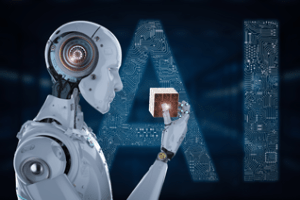
This course is offered by the
Faculty of Engineering & Technology (FET)
In a nutshell, Human-Machine Interfacing (HMI) is the process of connecting humans to machines, systems, or devices. It focuses on technologies that enable operators to interact with the machines. Typically used in industrial settings such as factories or power plants, the scope of HMI includes both hardware and software components.
You may think of HMI as a translator that lets you communicate with the machines: it turns your commands into a language your device can understand, and then shows you your device’s response in a way that you can understand. Consequently, with HMI, you can control and monitor various types of systems, from smart thermostats to industrial processes, and have fun doing it!
Applications of HMI you may find interesting include voice-assisted commands, Internet-of-Things, and Industrial Automation. Moving forward, all manners of automation would require effective HMI and this track offers you a great head start into this future.
(Complete any 3 courses)
This is the science behind designs boasting incredible user-friendliness. Take your chance to explore the methodologies of and procedures for designing ergonomic products and services, putting human factors as the primary consideration. We will look into the principles of ergonomics and human factors to formulate solutions to complex engineering problems. We will also explore the effects of the environment on humans. Practical experiments that you will be participating in include measuring of sound and illumination level in a working environment.
Quality Engineering is essential in ensuring that products and services meet or exceed customer expectations, comply with standards, and are produced efficiently. This course offers you crucial skills in quality management, statistical analysis, and process improvement. You will learn the history and definition of quality, and understand the responsibility for quality across an organization, customer satisfaction, and the cost implications of quality. The main focus of the syllabus includes Statistical Process Control (SPC), Total Quality Management (TQM), and proficiency in advanced quality tools. Additionally, there are topics on management commitment, Environmental Management Systems (EMS), and computerized quality control systems.
Connect any device or appliance you can think of to a network, and you can seamlessly control the resulting ecosystem. Enter the world of Internet-of-Things (IoT) with this course. We will start by providing some background insights into the origins of the technology before making our way into the protocols and platforms enabling IoT. You will learn the practical aspects of building IoT devices and assessing their performance. Finally, we will explore how industrial IoT impacts the society through applications in agriculture, healthcare, and smart vehicles.
The “Theory of Inventive Problem Solving, or “TRIZ”, developed by Russian engineer Genrich Altshuller, is a system for thinking outside the box that inventors can use to solve problems in any field. It is based on the idea that creativity involves breaking old patterns and forging new ones, which can be done using various methods, including brainstorming and reverse engineering. Enhance your capacity and capability in complex problem solving using the Theory of Inventive Problem Solving (TRIZ) tools and boost your potential for innovation through understanding the s-curve and trends of engineering system evolution.
Artificial Intelligence (AI) is reshaping the world, driving innovation across industries and redefining how machines interact with humans. This course takes students on a transformative journey through the fundamentals and real-world applications. Beginning with Artificial Intelligence Fundamentals, students will explore the core differences between AI and Machine Learning, uncovering how neural networks—from simple architectures to deep learning models—power intelligent decision-making. They will also delve into supervised and unsupervised training, understanding how machines learn and evolve over time.
Moving beyond theory, Artificial Intelligence in Practice brings AI to life by examining its reasoning, knowledge representation, planning, communication, and perception capabilities. From optimization and classification to prediction, translation, and recognition, students will discover how AI mimics human intelligence to solve complex problems, understand the world, and make informed decisions.
Finally, Applications and Case Studies provide a hands-on exploration of AI in action. Students will engage with fuzzy logic for decision-making, dive into pattern recognition in speech and signals, and explore machine vision for image analysis and tracking. By the end of this course, students will not only understand AI’s theoretical foundations but also gain practical skills to design intelligent systems that shape the future.
The development of the groundbreaking fifth generation (5G) mobile network we enjoy today did not happen in a single day. Journey into the foundational radio network planning processes in the evolution of mobile networks from GSM to 5G. This course covers free-space radio propagation, propagation models for path loss prediction, building penetration loss, and outdoor-to-indoor design. We will study the architecture of GSM systems, their configuration, coverage planning, capacity planning, and optimization as well as monitoring. You will also be looking into the UMTS, LTE, and 5G systems.
